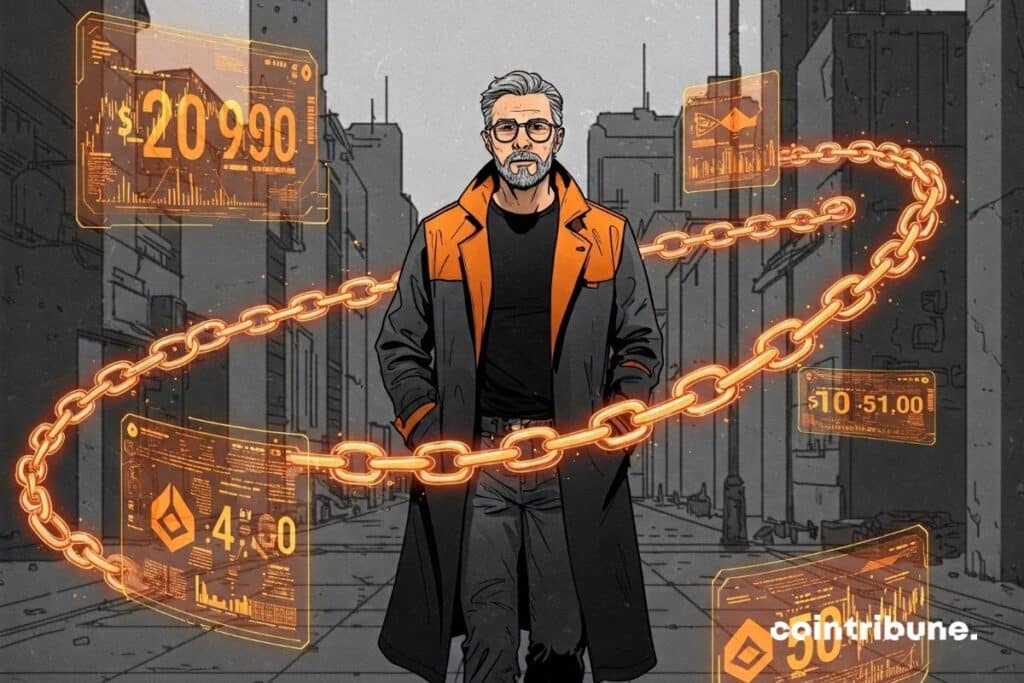Quantum-Resistant Blockchains Are Coming—And Wall Street Isn’t Ready
Forget the tired debates about Bitcoin’s energy use or Ethereum’s fees. The next crypto battleground is post-quantum cryptography—and decentralized networks are racing to adapt first.
Why it matters: When quantum computers crack conventional encryption (experts say 5-15 years), today’s ’secure’ blockchain signatures become child’s play. Projects like QANplatform and Algorand are already deploying lattice-based defenses.
The irony? Traditional finance spent billions on quantum research labs... while open-source devs solved it with 1/1000th the budget. Now banks face their Y2K moment—except this time, they can’t just hire Accenture to patch COBOL.
Bottom line: The crypto that survives the quantum apocalypse won’t just store value. It’ll rewrite the rules of digital trust. (And yes, that includes outlasting your bank’s ’state-of-the-art’ security.)

What Does “Post-Quantum” Mean And Why Is It Important?
Quantum computing is a technological breakthrough that will reshape modern technology. Quantum computers have the potential to break widely used cryptographic protocols like RSA and elliptic curve cryptography (ECC), which secure everything from internet communications to crypto transactions. Once quantum computers reach sufficient computational power, they will be able to crack these systems with ease, jeopardizing sensitive data.
In the crypto and blockchain world, the implications would be profound. Quantum computers could instantly recover private keys, decrypt past encrypted communications, and even forge crypto transactions—undermining trust in validation systems. To counter this threat, it’s crucial to prepare for a future where quantum security becomes the norm.
The Naoris Protocol Solution: A Decentralized Post-Quantum Infrastructure
Naoris Protocol positions itself as the answer to this growing threat. It offers a Decentralized Post-Quantum Infrastructure that protects blockchain transactions and Web3/Web2 physical infrastructure from quantum computer attacks. Operating at the, beneath L0 to L3 blockchain layers, it acts as the trust and security fabric for Web3 and the modern internet andis designed to withstand Q-Day without requiring major modifications to existing networks.
Sub-Zero Layer: The Foundation of the Future
This Sub-Zero Layer provides enhanced security without the need for disruptive “hard forks,” which can compromise network integrity. It’s fully compatible with EVM (Ethereum Virtual Machine) networks, integrating smart contracts and security nodes to ensure total resilience against quantum attacks.
Using NIST-standardized post-quantum algorithms likeand, Naoris Protocol delivers maximum transaction security—even in the face of quantum computers. Its key innovation lies in its ability to integrate post-quantum protection seamlessly, without disrupting the operation of existing blockchain networks.
The 3 Core Areas of Post-Quantum Protection
1. Blockchain Transactions Secured Against Quantum Threats
Naoris Protocol offers a Decentralized Post-Quantum Infrastructure through the Sub-Zero Layer, enabling EVM-compatible blockchain transactions to become quantum-secure—without the need for hard forks or disruptive network changes. By integrating the Dilithium-5 algorithm, Naoris ensures blockchain transactions are protected from future attacks.
2. Web3 Physical Infrastructure Secured Against Quantum Threats
The Sub-Zero Layer decentralizes trust in Web2 components used by Web3. Each node, DEX, bridge, and validator is secured within a real-time Immutable mesh network. This eliminates vulnerability risks and ensures that Web3 infrastructure is ready to withstand quantum computer attacks.
3. Web2 Physical Infrastructure Secured Against Quantum Threats
Through itsand, every server, IoT device, and data center is transformed into a cyber-secure validator “node” to create a ‘security hive mind’ that validates the health of every other participating device in real time eliminating single points of failure. This approach guarantees that even traditional Web2 infrastructures—often overlooked in blockchain security—are protected against post-quantum threats.
The Upcoming TGE (Token Generation Event)
Naoris Protocol’s Token Generation Event (TGE) is fast approaching—a crucial milestone for deploying this revolutionary technology. The TGE presents an opportunity to take part in a pioneering project in the field of post-quantum security, a rapidly growing space with increasing institutional interest.
Key Dates:
- Whitelist: Open now
- TGE: In the coming weeks
Why Participate?
- Be part of a major post-quantum security narrative, increasingly relevant to the future of crypto.
- Join a crypto trend that is gaining strong institutional momentum.
How to Participate?
Sign up for the whitelist now on the official.
Join Naoris Protocol in a few simple steps to take part in this Token Generation Event.
In a Nutshell: What Is Naoris Protocol?
Naoris Protocol offers a powerful, ready-to-deploy post-quantum solution for blockchain transactions, Web3, and Web2 infrastructure. By joining this innovative initiative, you contribute to shaping the future of digital security in a world increasingly vulnerable to quantum threats.
Summary of Benefits:
- Post-quantum security, without complex infrastructure changes
- Decentralized architecture securing blockchain transactions and physical Web3/Web2 infrastructure
- A ready-to-deploy solution with full EVM compatibility
Naoris Protocol is now positioned as the go-to solution to protect blockchain and Web3 networks from post-quantum threats. Join this technological revolution today—be at the forefront of digital security by participating in the TGE and registering your project on the whitelist now.
Maximize your Cointribune experience with our "Read to Earn" program! For every article you read, earn points and access exclusive rewards. Sign up now and start earning benefits.

